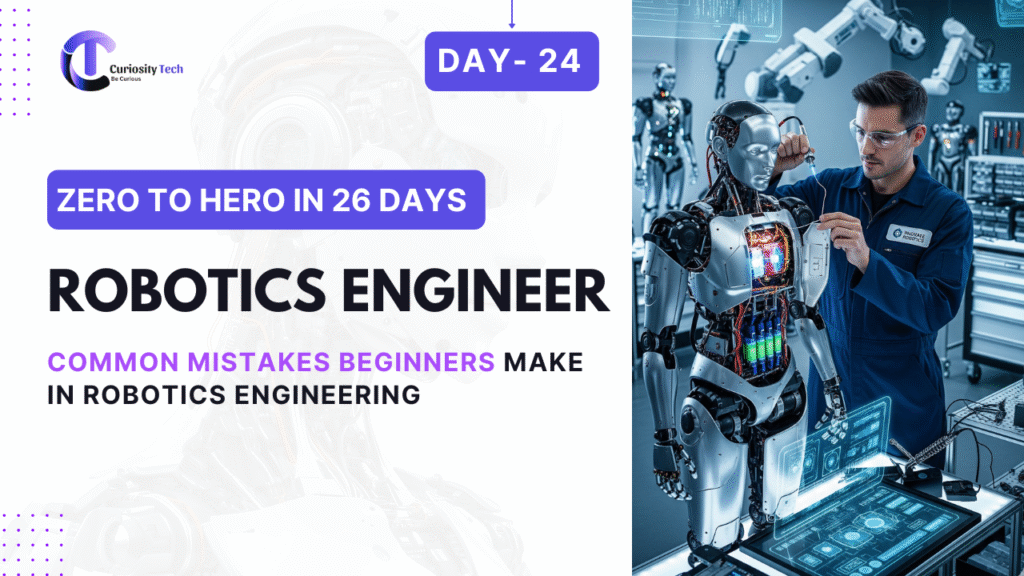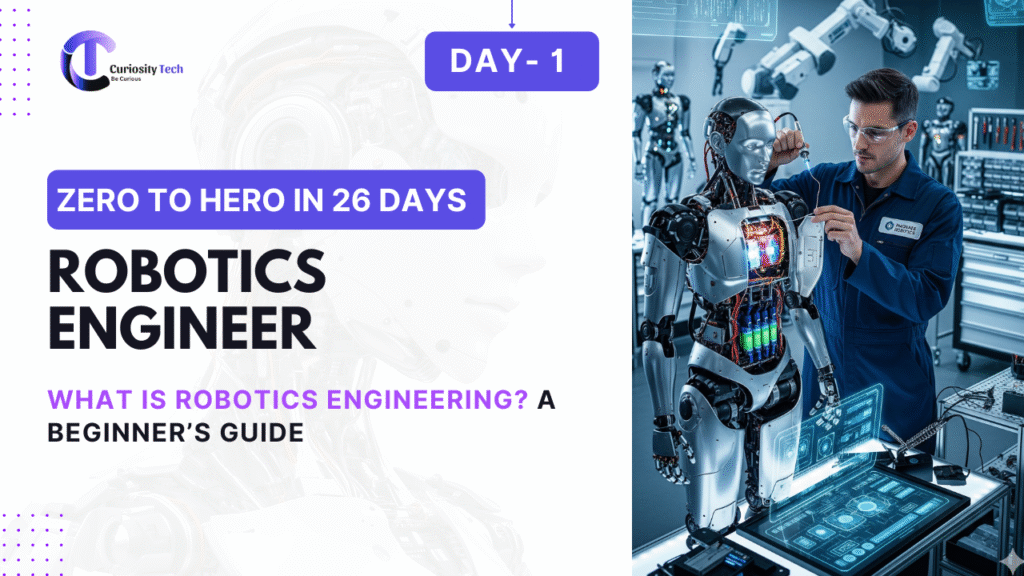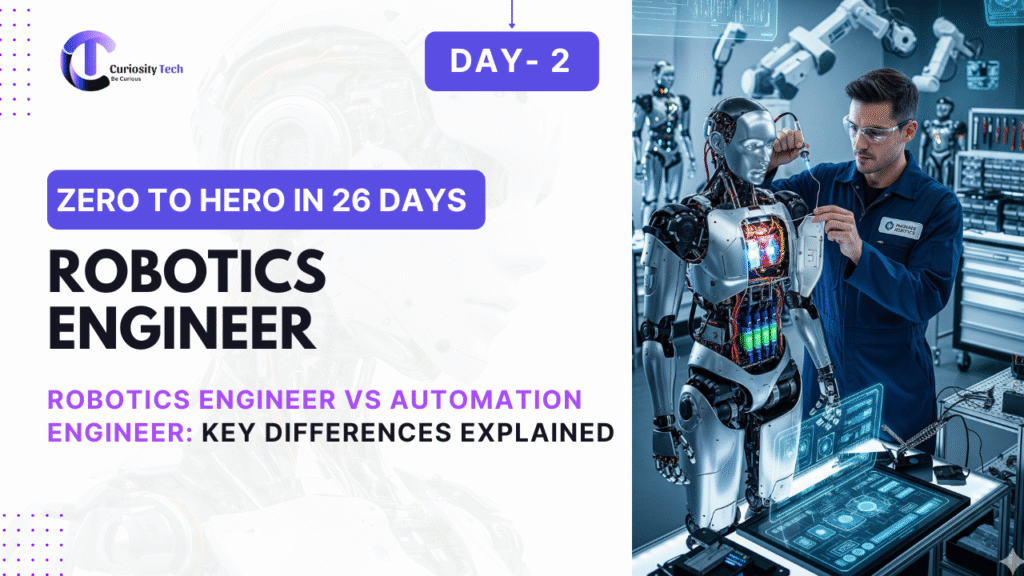Introduction
Robotics engineering is a complex and multidisciplinary field, and beginners often face challenges that can slow their learning curve. Understanding common pitfalls and how to avoid them is crucial to accelerate skill development and gain confidence in building real-world robotic systems.
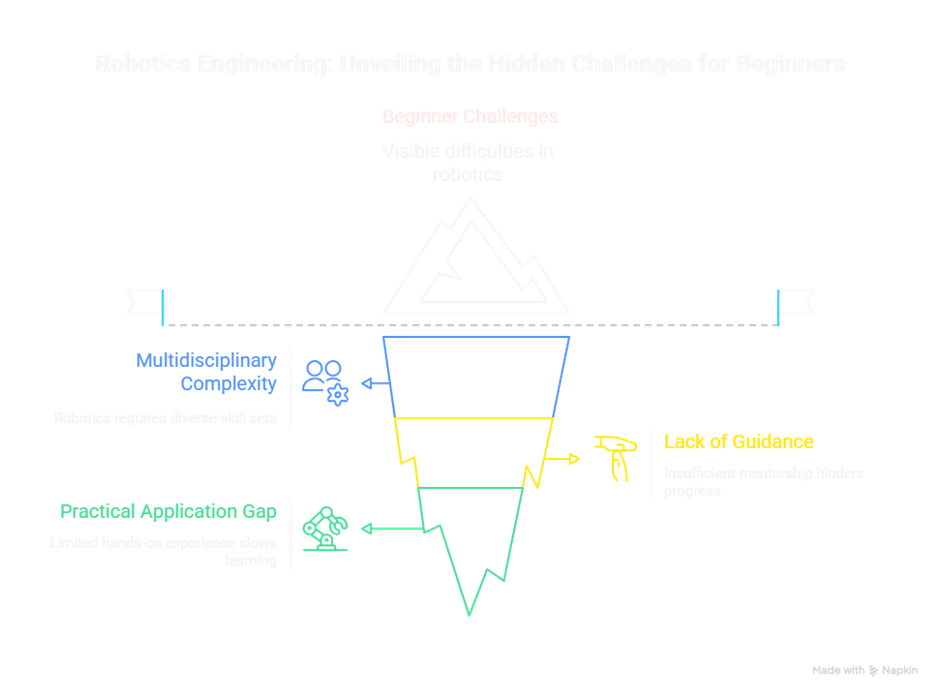
At CuriosityTech.in, learners not only learn robotics concepts but also receive guidance on avoiding common mistakes through practical exercises, projects, and mentorship.
1. Mistake: Ignoring Fundamentals of Mathematics and Physics
Many beginners jump straight into building robots without understanding the core concepts of kinematics, dynamics, linear algebra, and control theory.
Why It’s a Problem:
- Robot motion calculations and path planning rely heavily on matrix operations, transformations, and vectors.
- Ignoring physics can lead to mechanical design flaws and instability.
Corrective Strategy:
- Study robot kinematics and dynamics, focusing on forward and inverse kinematics.
- Apply mathematics in simulation projects using MATLAB or Python.
- CuriosityTech.in provides tutorials integrating mathematical concepts with real-world robotics examples.
Example: Miscalculating torque requirements for a robotic arm leads to motor overload and system failure.
2. Mistake: Poor Sensor Integration
Beginners often attach sensors without understanding sensor limitations, placement, and calibration.
Consequences:
- Erroneous data can lead to navigation errors or collision in autonomous robots.
- Misaligned sensors reduce accuracy in tasks like mapping, SLAM, or obstacle detection.
Corrective Strategy:
- Learn about sensor types (LiDAR, ultrasonic, IMU, camera) and their specifications.
- Conduct sensor calibration tests before deployment.
- Simulate sensor integration in ROS or Gazebo before hardware implementation.
Diagram Idea: Robot with misaligned vs properly aligned sensors, showing data accuracy differences.
3. Mistake: Overlooking Embedded System Programming
Beginners may underestimate the importance of firmware and embedded programming in robotics.
Problems:
- Motors may not respond as intended.
- Timing issues, incorrect sensor reading, and communication failures.
Corrective Strategy:
- Practice Arduino or Raspberry Pi programming.
- Understand I2C, SPI, UART protocols for sensor and actuator communication.
- CuriosityTech.in provides step-by-step embedded systems tutorials with real-world projects.
4. Mistake: Ignoring Robot Simulation Before Hardware Testing
Jumping directly to hardware without simulation can lead to costly mistakes.
Consequences:
- Robot may collide, malfunction, or fail in real-world environments.
- Waste of time and resources.
Corrective Strategy:
- Use ROS, Gazebo, or V-REP for testing algorithms virtually.
- Simulate motion planning, SLAM, and obstacle avoidance before deploying on physical robots.
Diagram Idea: Workflow showing simulation → algorithm validation → hardware testing.
5. Mistake: Neglecting Control Systems
Many beginners overlook PID controllers, feedback loops, and motion control algorithms.
Impact:
- Unstable robot movements.
- Poor trajectory following and performance degradation.
Corrective Strategy:
- Study PID controllers, sensor feedback, and closed-loop control.
- Implement small-scale projects like line-following robots or mobile platforms.
- CuriosityTech.in offers control systems tutorials integrated with practical robot experiments.
6. Mistake: Overcomplicating Projects
Beginners often attempt complex multi-feature robots without mastering basics.
Problems:
- Frustration due to frequent failures.
- Difficulty in troubleshooting.
Corrective Strategy:
- Start with simple projects like line-following, obstacle-avoidance, or basic manipulator arms.
- Incrementally add features while documenting each stage.
Suggested Project Progression for Beginners
| Level | Project Example | Skills Learned |
| Beginner | Line-following robot | Motor control, basic sensors |
| Intermediate | Obstacle-avoidance robot | Sensor integration, PID control |
| Advanced | SLAM-enabled mobile robot | Navigation, path planning, ROS |
| Expert | Autonomous service robot | AI integration, cloud robotics, HRI |
7. Mistake: Skipping Documentation
Beginners often fail to document their experiments, algorithms, and hardware setups.
Problems:
- Difficult to debug errors.
- Hinders knowledge sharing and reproducibility.
Corrective Strategy:
- Maintain logs, schematics, code comments, and step-by-step project notes.
- CuriosityTech.in emphasizes documentation for learning reinforcement and project presentation.
8. Mistake: Ignoring Human-Robot Interaction and Safety
Some beginners neglect safety standards and ergonomics, especially in collaborative robotics projects.
Consequences:
- Risk of accidents or injuries.
- Reduced efficiency and usability.
Corrective Strategy:
- Learn ISO safety standards for collaborative robots.
- Implement speed limits, emergency stops, and safe operating distances in designs.
- Study human-robot ergonomics through simulation and real-world case studies.
9. Learning Tips to Avoid Beginner Mistakes
- Focus on Fundamentals: Mathematics, physics, and programming.
- Integrate Sensors and Actuators Thoughtfully: Understand capabilities and limitations.
- Simulate Before Deploying: Always validate algorithms in virtual environments.
- Start Simple, Scale Gradually: Build confidence and troubleshoot effectively.
- Document Everything: Record designs, experiments, and lessons learned.
- Prioritize Safety: Learn HRI principles and safety protocols.
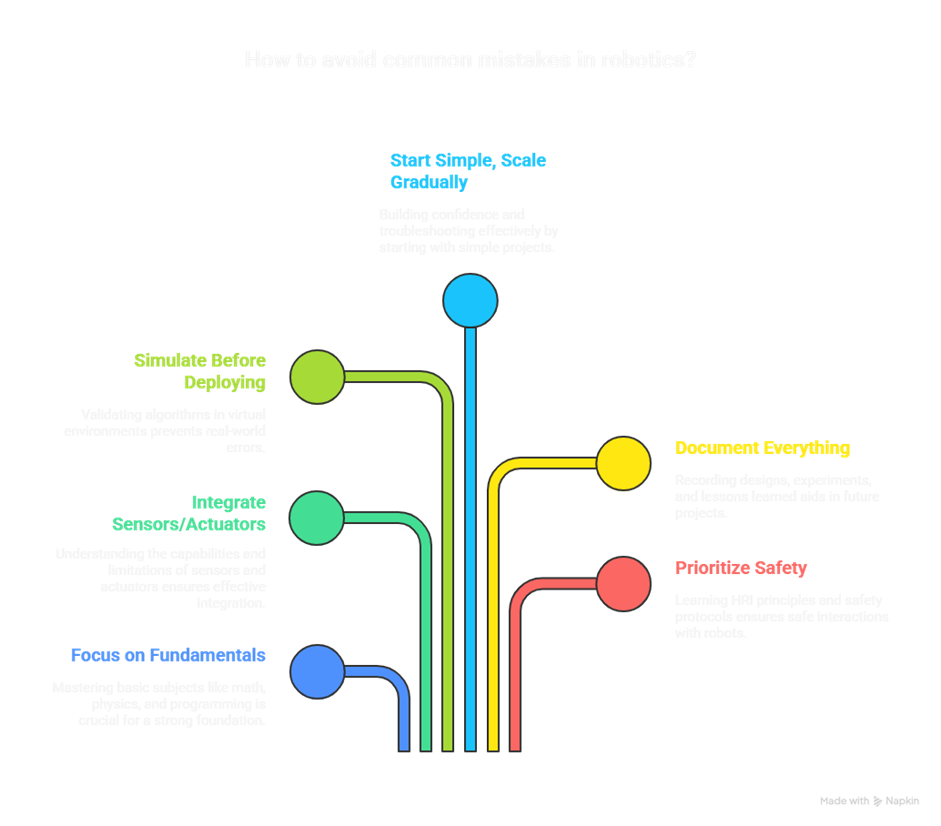
CuriosityTech.in provides hands-on guidance, simulation tutorials, and mentorship to help beginners learn efficiently while avoiding common mistakes.
Conclusion
Avoiding common beginner mistakes is critical to accelerate skill development and ensure successful project outcomes in robotics. By focusing on fundamentals, integrating sensors and controls thoughtfully, simulating algorithms, documenting work, and prioritizing safety, beginners can build confidence, develop expertise, and lay the foundation for a professional robotics career. Platforms like CuriosityTech.in guide learners through structured learning paths with practical projects and real-world case studies.

